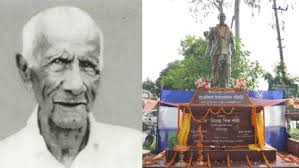To honor the legacy of Babu Chabilal Upadhyaya, the prominent Gorkha leader, Assam Chief Minister Himanta Biswa Sarma has instructed the Guwahati Metropolitan Development Authority (GMDA) to find a prominent and suitable location in the city for erecting his statue. This decision has been met with widespread support, as the move is seen as a tribute to a leader who played a crucial role in the social and political history of Assam’s Gorkha community.
Babu Chabilal Upadhyaya, a revered figure, was known for his contribution to the Gorkha community’s welfare, and his impact on the region remains significant. As one of the founding members of the Assam Gorkha Sammelan, he worked tirelessly to address the issues faced by the Gorkha community in Assam, ensuring their rightful place in society. His legacy continues to inspire many, and the statue will serve as a permanent reminder of his dedication and service.
The Chief Minister’s directive for the GMDA to identify an ideal location for the statue is seen as an effort to honor not just Upadhyaya’s work but also to strengthen the Gorkha community’s connection to the state. The Gorkhas have long played a vital role in the socio-political landscape of Assam, and the statue will symbolize their enduring presence and contributions to the state’s development.
The location of the statue is a topic of much discussion. It is expected that the GMDA will conduct a thorough evaluation to ensure the site selected is both highly visible and accessible to the public. Potential locations in central areas of the city are being considered, with a focus on ensuring that the statue becomes a prominent landmark in Guwahati. The authorities are also keen on making sure that the statue stands as a symbol of unity, highlighting the contributions of the Gorkha community to the state’s social fabric.
This decision comes at a time when the state government has been emphasizing the importance of recognizing the contributions of various communities to Assam’s growth. Chief Minister Sarma has consistently advocated for greater inclusion and recognition of communities that have played a key role in the state’s development. The statue will be part of a larger effort to preserve the cultural heritage of Assam and honor the leaders who have shaped its history.
The announcement has sparked positive reactions across the Gorkha community and beyond. Many view it as a long-overdue recognition of Babu Chabilal Upadhyaya’s contribution to the region. Social media platforms have been flooded with messages of support and gratitude for the decision. For many Gorkhas, the statue will not only serve as a tribute to Upadhyaya’s legacy but also as a source of pride, marking their deep-rooted connection to the land they call home.
Furthermore, the statue is expected to act as a focal point for education and awareness about the Gorkha community’s rich history and their role in shaping Assam. It will also serve as a reminder of the struggles faced by the community in the past and their continuous efforts to achieve social equality and recognition.
Local leaders and activists have expressed their support for the Chief Minister’s decision, calling it a step in the right direction towards recognizing the contributions of all communities in the state. They have also pointed out that the Gorkha community has long been an integral part of Assam’s growth, and honoring their leaders is a significant gesture that fosters unity and inclusiveness.
As the process moves forward, the GMDA will be tasked with ensuring that the statue is created with the utmost respect for Babu Chabilal Upadhyaya’s legacy. Discussions around the statue’s design and the materials used are expected to take place soon, with consultations involving the Gorkha community and local stakeholders.
In the coming months, Guwahati is set to witness a monumental change as it welcomes a statue that stands as a tribute to a leader who remains an important figure in Assam’s history. This initiative is expected to leave a lasting impact on the state’s cultural and political landscape, strengthening the ties between communities and celebrating the diversity that defines Assam.




